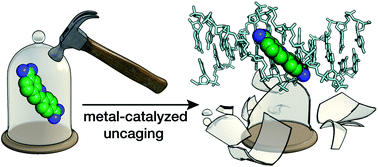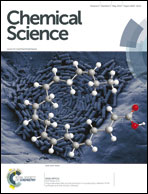Metal-catalyzed uncaging of DNA-binding agents in living cells†
Abstract
Attachment of alloc protecting groups to the amidine units of fluorogenic DNA-binding bisbenzamidines or to the amino groups of ethidium bromide leads to a significant reduction of their DNA affinity. More importantly, the active DNA-binding species can be readily regenerated by treatment with ruthenium catalysts in aqueous conditions, even in cell cultures. The catalytic chemical uncaging can be easily monitored by fluorescence microscopy, because the protected products display both different emission properties and cell distribution to the parent compounds.


 Please wait while we load your content...
Please wait while we load your content...